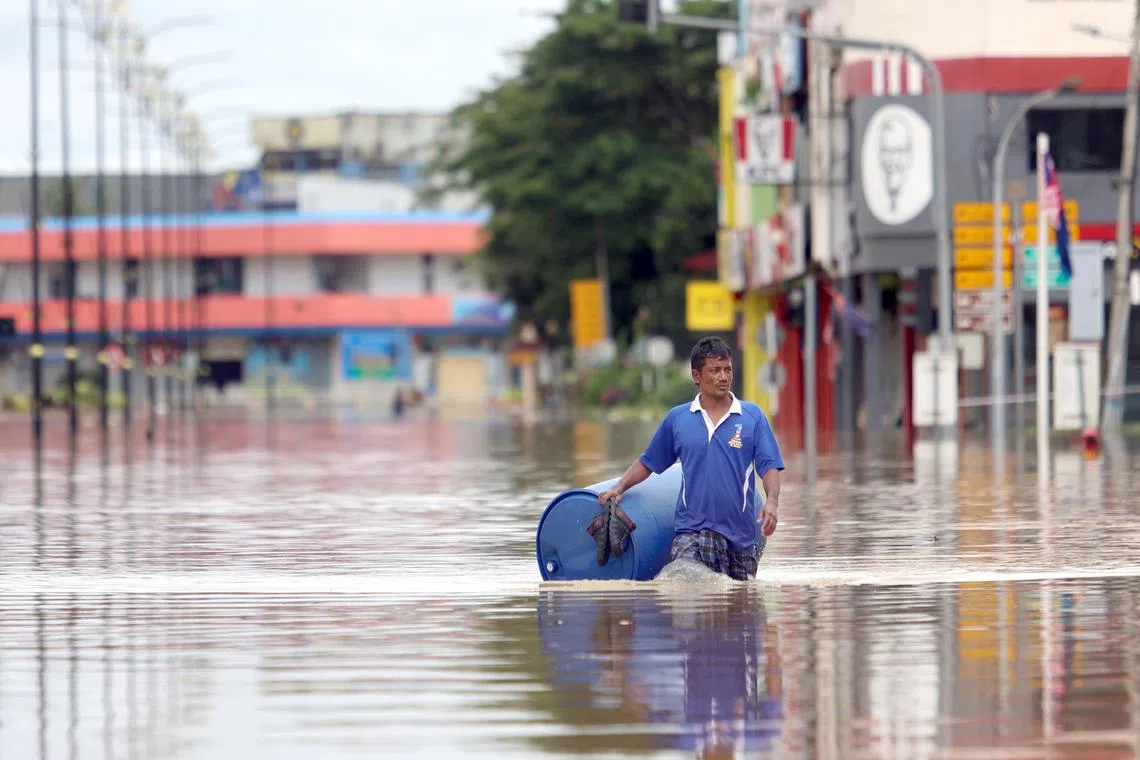Johor expected to be more flood-prone: Expert
Sign up now: Get ST's newsletters delivered to your inbox

Among the areas expected to receive more rainfall is Kota Tinggi, a district that is already susceptible to floods.
PHOTO: THE STAR/ASIA NEWS NETWORK
Follow topic:
JOHOR BARU – Johor is expected to see an increase in rainfall and experience more floods in the near future, said a Universiti Teknologi Malaysia (UTM) researcher.
UTM’s Centre for Environmental Sustainability and Water Security researcher Zulfaqar Sa’adi said the Malaysian state is expected to see a rainfall increase of 20 per cent to 30 per cent on average in the next few decades.
“Based on data we have collected and analysed, Johor is expected to see more rain from now to 2060, especially between November and January,” said Dr Zulfaqar, speaking to The Star.
“Even now, we can see based on historical assessment that there is more rainfall even in the middle of the year.”
He added: “While we continue to see more rainfall between November and January, we can see that there is also sporadic extreme rainfall throughout the year.
“The increase in rainfall may be good in terms of water availability, but it also puts the state at a larger risk of floods.”
Dr Zulfaqar spoke about the matter during his presentation on climate change scenarios and water security in the Johor River basin at the five-day Asia-Pacific Climate Week 2023 in Johor Baru.
He said that among the areas expected to receive more rainfall is Kota Tinggi, a district that is already susceptible to floods.
“In terms of rainfall concentration, Kota Tinggi is expected to receive more rain, and this is concerning as the district is known for its vulnerability to flooding,” he said.
It is among the districts in Johor that are often hit by floods.
In the 2006 to 2007 Johor floods, more than 100,000 people were evacuated to relief centres as the entire Kota Tinggi town and nearby housing areas were inundated for nearly two weeks.
However, Dr Zulfaqar said that in the distant future, Johor is projected to see less rainfall, and the concern would then be water scarcity.
“Based on our assessment for the distant future between 2061 and 2100, there will be less rainfall, partly due to the rise in temperature.” THE STAR/ASIA NEWS NETWORK

